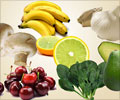Scientists have discovered an economical and effective way to rapidly better the quality of drinking water.

"For many countries, access to clean drinking water is still a major concern. Previous studies estimate that globally, half of all hospital beds are occupied by people suffering from a water-related illness," said Kellogg Schwab, PhD, MS, senior author of the study, director of the Johns Hopkins University Global Water Program and a professor with the Bloomberg School's Department of Environmental Health Sciences.
"'The preliminary results of this study show solar disinfection of water combined with citrus could be effective at greatly reducing E. coli levels in just 30 minutes, a treatment time on par with boiling and other household water treatment methods. In addition, the 30 milliliters of juice per 2 liters of water amounts to about one-half Persian lime per bottle, a quantity that will likely not be prohibitively expensive or create an unpleasant flavor," Schwab explained.
In low-income regions, solar disinfection of water is one of several household water treatment methods to effectively reduce the incidence of diarrheal illness.
One method of using sunlight to disinfect water that is recommended by the United Nations Children's Fund (UNICEF) is known as SODIS (Solar water Disinfection).
The SODIS method requires filling 1 or 2 L polyethylene terephthalate (PET plastic) bottles with water and then exposing them to sunlight for at least 6 hours. In cloudy weather, longer exposure times of up to 48 hours may be necessary to achieve adequate disinfection.
Advertisement
The researchers filled PET plastic bottles with dechlorinated tap water and then added lime juice, lime slurry, or synthetic psoralen and either E. coli, MS2 bacteriophage or murine norovirus.
Advertisement
"Many cultures already practice treatment with citrus juice, perhaps indicating that this treatment method will be more appealing to potential SODIS users than other additives such as TiO2 [titanium dioxide] or H2O2[hydrogen peroxide],"suggest the authors of the study.
However, they caution, "'additional research should be done to evaluate the use of lemon or other acidic fruits, as Persian limes may be difficult to obtain in certain regions."
The results appeared in the April 2012 issue of American Journal of Tropical Medicine and Hygiene.
Source-ANI












